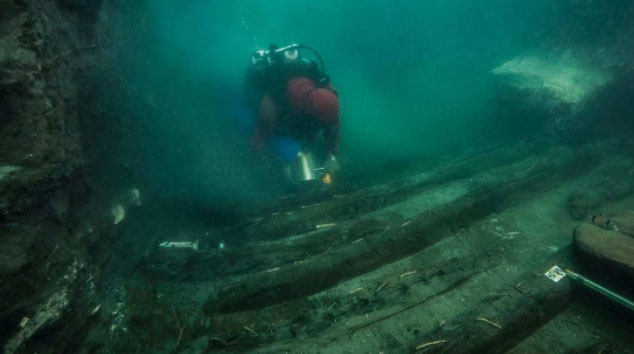A ship next to a temple has been discovered in the ruins of an ancient Egyptian city that sank to the bottom of the sea over a thousand years ago.
Divers have uncovered rare remnants of a ship within the sunken ancient city located in Egyptian waters.
Thonis-Heracleion was once Egypt’s largest port in the Mediterranean Sea and a complex that frequently hosted Greek merchants.

Divers near the mysterious ship next to the temple in the sunken city of Egypt.
The city dominated the region for centuries before Alexander the Great founded Alexandria in 331 BC.
This ancient city was one of the most important ports in Egypt. Due to the impact of several earthquakes and tsunamis, Thonis-Heracleion was destroyed and submerged along with vast areas of the Nile Delta. It wasn’t until 2001 that researchers discovered the ancient Thonis-Heracleion located in the Abu Qir Bay area near Alexandria, now Egypt’s second-largest city.
Recently, a research team led by the European Institute of Underwater Archaeology discovered the sunken ship near the famous Amun temple that collapsed in the 2nd century BC.
Initial preliminary research indicates that the flat-bottomed ship is approximately 25 meters long, equipped with oars and large sails, constructed in a traditional classical style, featuring several characteristics typical of ancient Egyptian construction.
Additionally, the research team also uncovered remnants of a large burial area dating back to the early years of the 4th century BC.
This new discovery provides excellent evidence of the presence of Greek merchants who lived in the ancient city, indicating that Greeks had settled there during the reign of the last Pharaoh. They built their own sanctuaries near the colossal temples.
Previously, archaeologists had discovered several ancient artifacts in the sunken city of Thonis-Heracleion. Most of the artifacts are in such good condition because, for over two thousand years, the silt at the bottom of the sea has protected them from deterioration.
The quantity and quality of the unearthed artifacts suggest that the city of Thonis-Heracleion thrived and reached its peak from the 6th to the 4th century BC.





















































